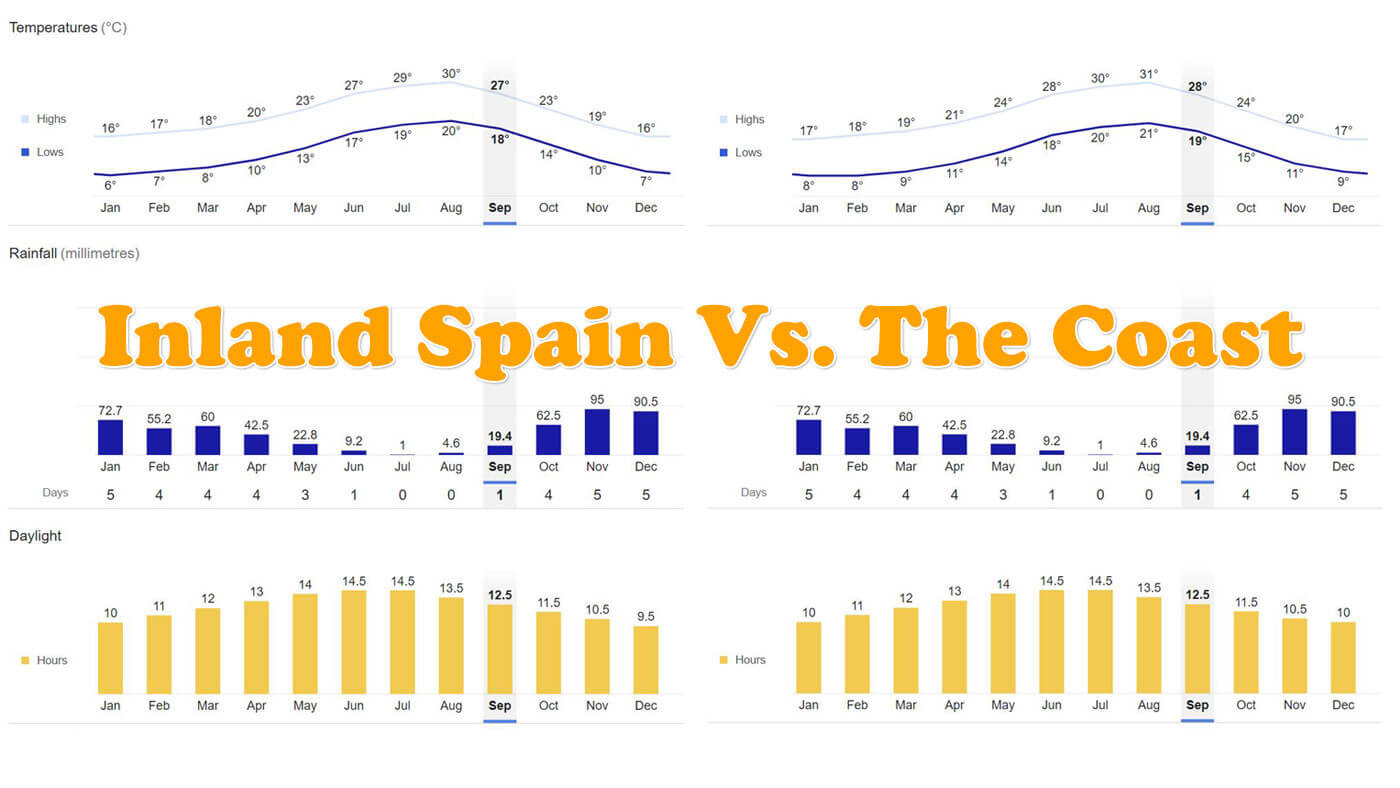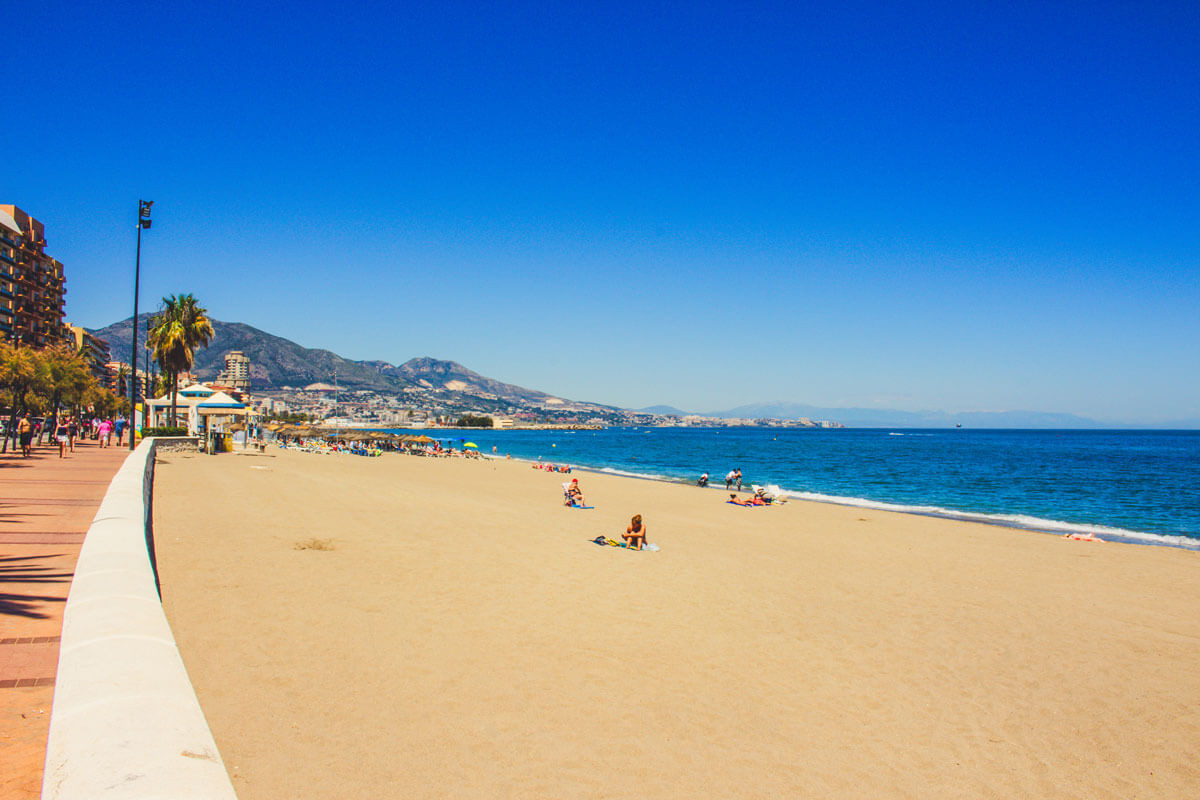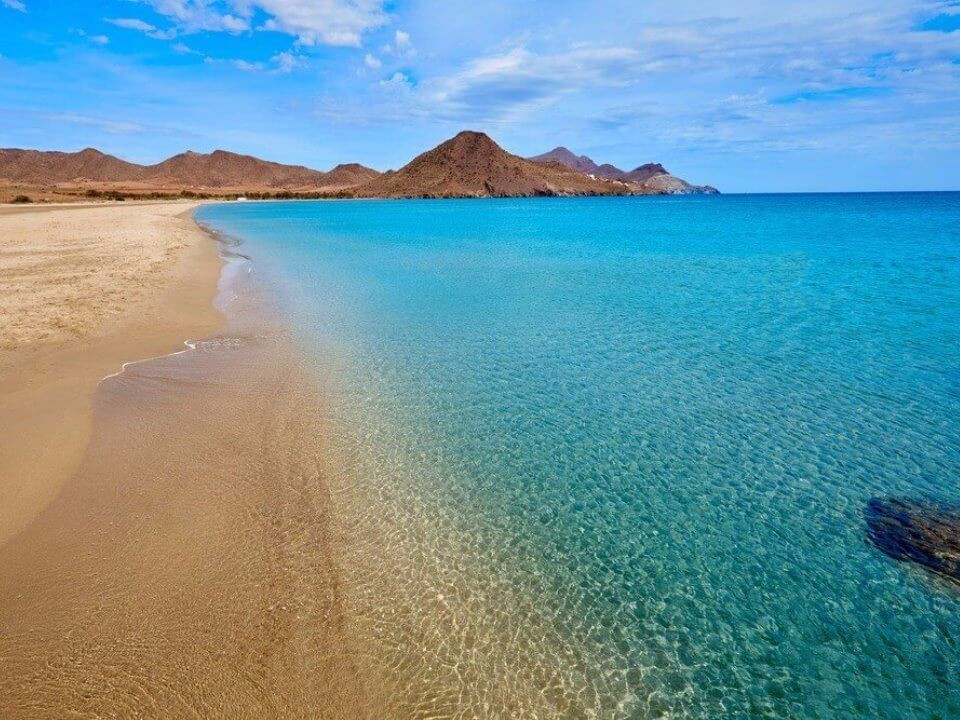Introduction
Spain, with its diverse geography and varied topography, offers a wide range of climatic experiences to residents and visitors alike. The country's unique position on the Iberian Peninsula exposes it to various weather patterns, resulting in distinct climates across different regions. In this article, we will explore and compare the weather on the southern coast of Spain with that of the inland areas, shedding light on the key differences and what to expect when planning your visit or even relocation to Spain!
What is the Weather like right now on the Costa del Sol?
Check out the 7-day forecast for Marbella, Costa del Sol in the South of Spain. The major towns on the coast of the Costa del Sol include Málaga, Torremolinos, Benalmádena, Fuengirola, Costa de Mijas, Marbella, Casares, Rincón de la Victoria and Estepona.
While you're here, you may like to view (and dream about) our villas for sale on the Costa del Sol. If you ever want to make that dream a reality, feel free to contact us to start your journey!
What is the Weather like right now in the Guadalhorce Valley?
Check out the 7-day forecast for inland areas of the Costa del Sol in the South of Spain. The Guadalhorce Valley includes the following major towns: Coín (the biggest town in the area, and where our office is based), Alhaurín de la Torre, Alhaurín el Grande, Almogía, Álora, Cártama, Pizarra and Valle de Abdalajís. If you like, you can view all our properties for sale in the Guadalhorce Valley in the inland areas of the Costa del Sol.
What is the climate like on the Costa del Sol Coast?
The southern coast of Spain, often referred to as the Costa del Sol, is a popular destination for tourists and expats seeking sunny skies and mild temperatures. This region, which includes cities like Malaga, Marbella, and Almeria, boasts a Mediterranean climate characterized by hot, dry summers and mild, wet winters.
Summer Weather on the Costa del Sol
Summers on the southern coast are glorious, with temperatures averaging between 25°C to 30°C (77°F to 86°F) from June to August. Sun-soaked days are the norm, making this a prime spot for beachgoers and water sports enthusiasts. Rainfall is minimal during these months, and the sea temperature is inviting for swimming and snorkelling.
Winter Weather on the Costa del Sol
Winters are mild, with daytime temperatures ranging from 15°C to 20°C (59°F to 68°F) on average. While it does rain more frequently from November to February, the precipitation is relatively low compared to other parts of Spain. This makes the southern coast a popular winter escape for those seeking a respite from colder climates.

What is the climate like in the Inland Areas of the Costa del Sol?
In contrast to the idyllic coastal climate, inland Spain experiences more extreme weather patterns due to its distance from the moderating influence of the sea. Cities like Madrid, Seville, and Zaragoza are located in the interior regions of the country and are subject to a continental climate.
Summer Weather in the Inland Areas of Southern Spain
Inland Spain sizzles during the Summer months, with temperatures soaring well above 30°C (86°F). They often exceed 40°C (104°F) in cities like Madrid! The lack of sea breezes intensifies the heat, making it a challenge for outdoor activities during the peak of summer. However, the region boasts clear skies and little rainfall, making it an excellent destination for sun-worshippers who can handle the heat.
Winter Weather in the Inland Areas of Southern Spain
Winters in inland Spain are noticeably chillier, with temperatures typically ranging from 5°C to 10°C (41°F to 50°F) during the day.
However, this makes for all the more cosy nights in front of the fireplace in your dream Spanish country property in the mountains!

The interior areas of Spain experience colder winters compared to the coastal regions, and snow in the Sierra Nevada Mountain Range near Granada, which is extremely popular for snow sports enthusiasts (usually) between the months of December and May. While the skies are generally clear, there are colder spells, particularly in January and February.

Key Differences and Considerations
Temperature Extremes: Inland Spain experiences more significant temperature extremes than the southern coast. Summers can be scorching, while winters can be quite cold, especially in higher-altitude areas.
Precipitation: The southern coast enjoys a more moderate climate with limited rainfall throughout the year. In contrast, inland areas may experience more seasonal variation in precipitation, with dry summers and the potential for snow in the winter.
Seasonal Activities: The southern coast is a year-round destination, with beach activities in the summer and milder temperatures for cultural exploration in the winter. Inland Spain is better suited for those who prefer outdoor activities in spring and autumn, as summers can be too hot, and winters too cold for some.

Conclusion
Spain's weather varies greatly between the southern coast and inland areas, offering travellers and residents a choice of climates to suit their preferences.
Remember, the distance between the inland town of Coín and the coastal town of Málaga is only 37km or 40 minutes drive and is just 26km or 27 minutes driving to Marbella!
The southern coast, with its Mediterranean climate, provides an ideal setting for those seeking sun and warmth, while inland regions offer a more extreme climate experience. When planning your trip to Spain, consider the time of year and your weather preferences to make the most of this diverse and captivating country. Whether you're drawn to the beaches of the Costa del Sol or the historic cities of the interior, Spain has something to offer every explorer.





